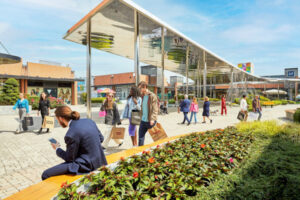By Thomas Rose
In recent times, we have heard many discussions about having up to 15% of a scheme’s GLA devoted to restaurant and leisure space, but I believe this view is already becoming outdated before many have had the opportunity to implement it.
Certainly, in the UK, we have seen a proliferation of leisure space in schemes with some reaching close to 25%, yet this can sometimes miss the point. The reason why we are creating leisure space is because customers want experience. Customers are being provided with more gastronomic options by converting previously unlettable retail units into restaurants, but the real aim of creating an exciting and truly experiential moment for customers is often missed as the space isn’t really fit for purpose.
We need to look at what customers really want. Around five years ago, we began the discussion about online retailing and how this would impact retail shops. This is now very much relevant to our F&B industry. How are the restaurants of the future (and very much present) going to deal with the online presence and virtual customers? This can impact schemes in many ways; how you deal with delivery vehicle parking and delivery drivers walking through malls, how sales are captured on turnover rents, how space requirements adapt (such as through larger kitchens to deal with increased demand), and ultimately, how to get customers to keep coming to restaurants in your scheme when they can order food in their pajamas from their sofas at home.
This is just one reason to look at schemes again and ask: Are we really creating an amazing experience and are we being ambitious enough? We know from our premium-occupier clients what they want; some are now saying they don’t want to position themselves in malls due to negative brand connotations. Despite the significant levels of trade they would create in malls, they now talk of only wanting to be located in an “anti-mall mall.” After all, who wants to take their loved one for a romantic meal overlooking closed retail shops?
The malls of the future will provide a far more interesting and diverse eating experience. Operators such as Eataly have provided an insight into this, but mall owners need to go further to create the spaces that the next generation of operators want. Community is key, mixing international, national and local heroes to create authenticity and soul. External units with outside seating, vistas over beautifully landscaped areas (even in covered malls—look at the central atrium of Yas Mall in Abu Dhabi for example), excellent service routes for delivery, defined zones for different catering price-points are all important. It is also critical to make sure the customer journey from transport mode to the restaurant is special, to enact innovative leasing strategies to ensure a vibrant mix with new and exciting names, and not to forget the marketing and branding of the restaurant area. You want people to be talking about your scheme as the place to be, so make sure you develop a brand to support that. Finally, and crucially, we need to embrace tenants’ creativity and work hand-in-hand to create the most vibrant schemes possible. Landlords must innovate to create amazing places. Exciting times ahead.
What is your opinion on this topic? Discuss it with us! Send your opinion to opinion@across-magazine.com !






